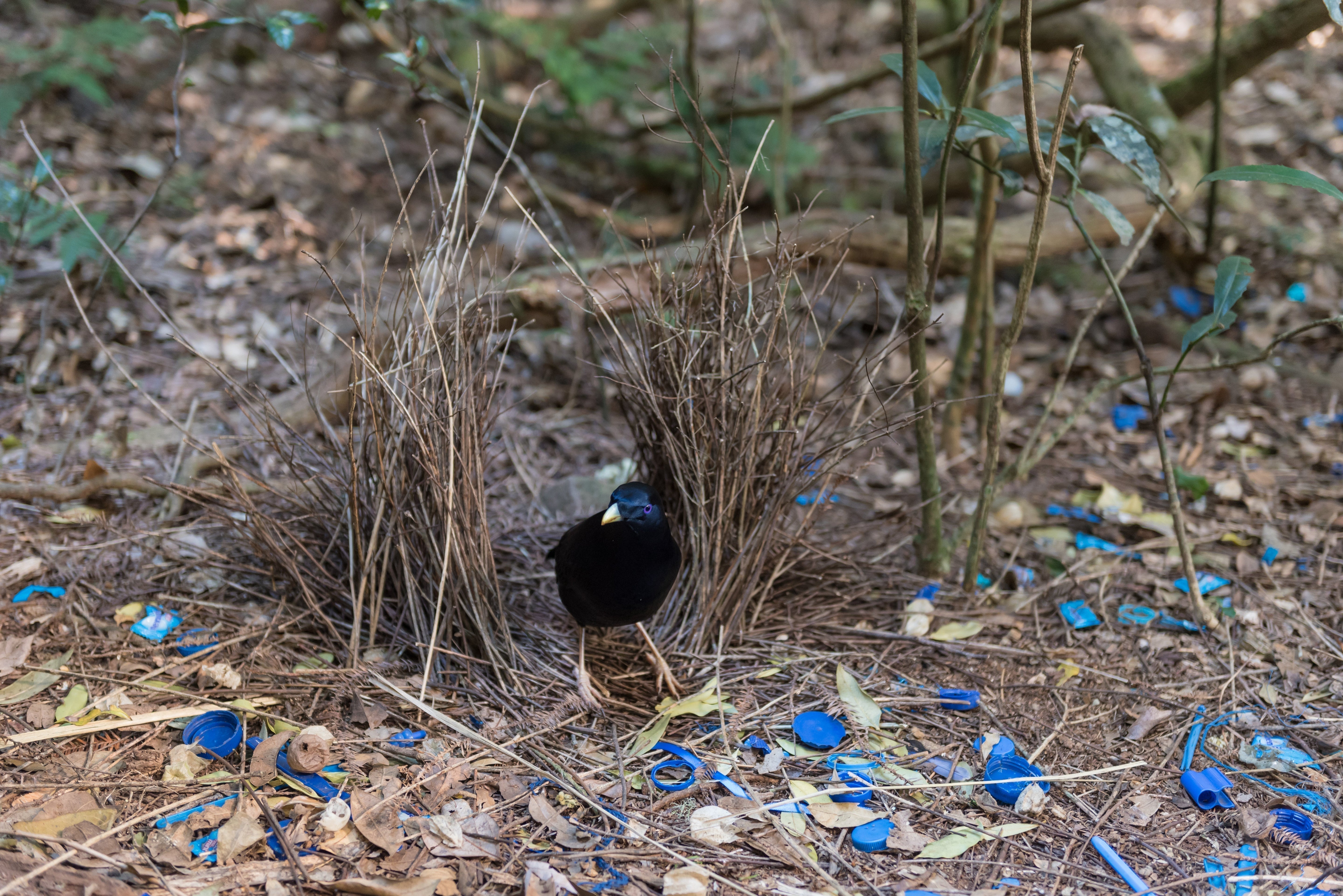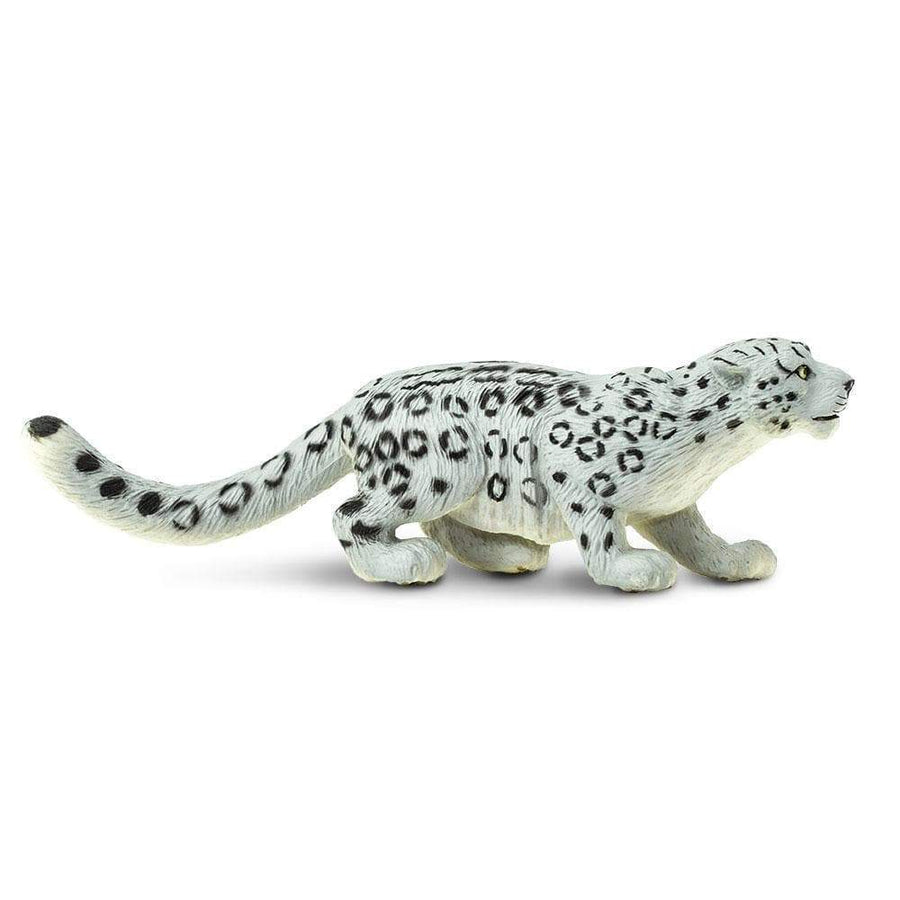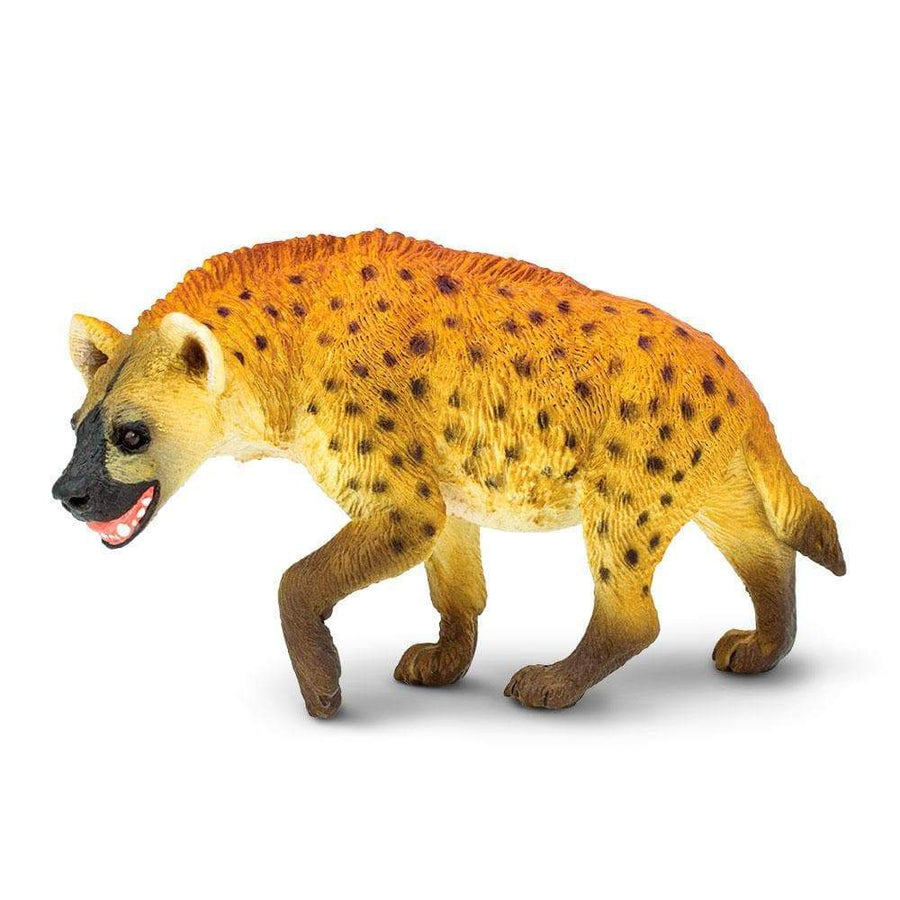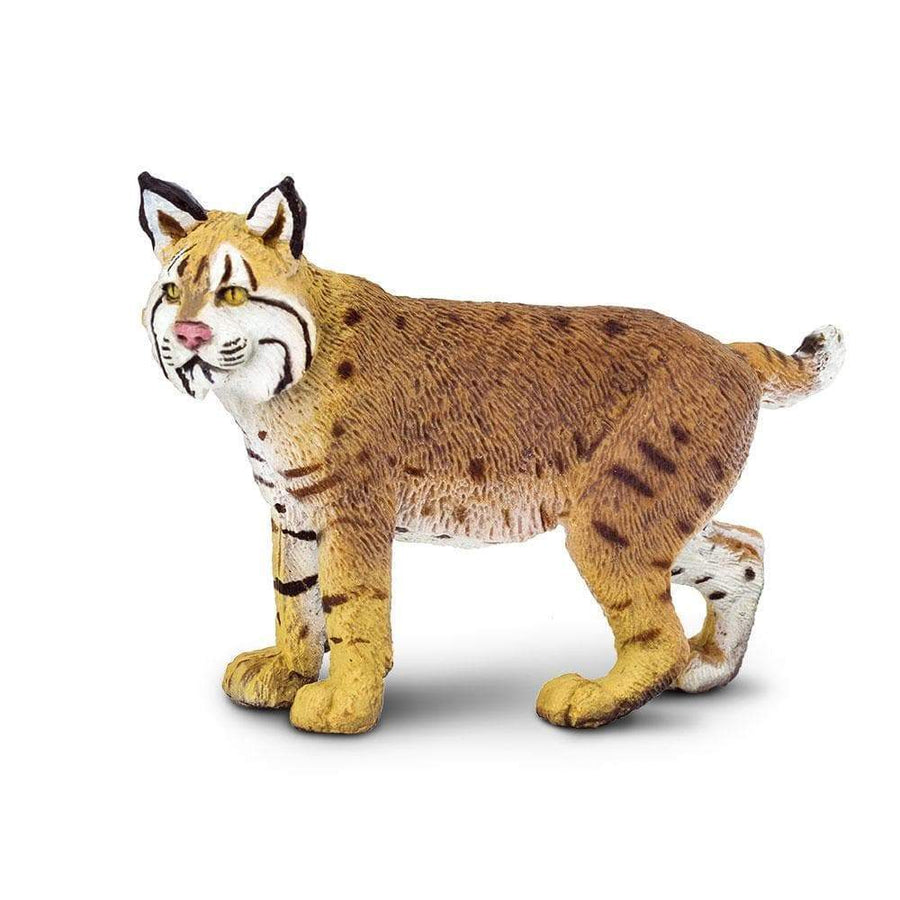Love is in the air... or is it underwater? Or maybe in a treetop? The world of wildlife is brimming with fascinating romantic gestures that make even the most extravagant human proposals seem ordinary.
From feathered finesse to underwater acrobatics, animals have some seriously wild moves when it comes to impressing a mate. Have you ever wondered what goes into romance in the animal kingdom? Buckle up, it’s about to get delightfully weird!
Explore Some Weird and Wild Wildlife Courtships:
1. The Bowerbird's Architectural Romance
Bowerbirds (found in Australia and New Guinea) don't just sing or dance, they build full-on art installations to woo a mate. Males construct elaborate bowers, arranging sticks and decorating them with colorful objects like berries, flowers, and even human-made trinkets (bottle caps, plastic, coins!). If a female is impressed, she enters the bower, but if the design isn't up to her standards, she moves on!

Why it's impressive:
- It's less about physical appearance and more about artistic ability and taste, a rare trait in the animal kingdom.
- Males even steal decorations from rival bowers to outshine the competition!
2. Rock-Obsessed Romantic Adelie Penguins
In the world of Adelie penguins, love isn't about flowers or chocolates—it's about finding the perfect rock and building a home together.
Males search for the smoothest, most perfect stone to present to a potential mate. If the female approves, she adds it to the nest, accepting him as her partner. Since pebbles are rare on the icy landscape, some penguins steal from other nests—or even try to outmaneuver rivals by offering a bigger, better rock. Pairs engage in a mirroring courtship ritual, where they bow, flap their wings, and call to each other, reinforcing their bond. Once a pair is formed, Adelie penguins often stay together for multiple breeding seasons, reuniting yearly to raise their chicks.
Why It’s a Spectacle:
· Males compete to build the best nests, sometimes resorting to stone-stealing sabotage.
· Their synchronized courtship dance and vocal duets are beautiful, well-rehearsed romantic spectacles.
· Once bonded, Adelie pairs return to each other year after year, strengthening their connection with every breeding season.
3. The Love Dance of the Peacock Spider
Peacock spiders take flirting to the next level with dazzling rainbow-colored abdomen flaps. Males lift and vibrate these flaps like a living disco ball, performing an energetic, leg-waving dance. The stakes are high! If the female isn't impressed, she may attack or eat him.

Why It’s Impressive:
- The male's abdomen is covered in iridescent scales that shift colors like a hologram.
- The dance includes rapid leg kicks, vibrations, and even drumming on the ground!
- One misstep, and he could be her next meal.
4. The Octopus's Sneaky & Shape-Shifting Courtship
Octopus courtship is equal parts impressive, bizarre, and downright sneaky, featuring dramatic displays, color-changing signals, and even risky deception to win a mate.
Male octopuses have a specialized mating arm called a hectocotylus, which they use to transfer sperm packets into the female's mantle. Some species even detach this arm and leave it with the female! Many octopuses flash vibrant colors and shifting patterns during courtship, using chromatophores in their skin to signal interest.
Some species, like the greater blue-ringed octopus, display bold, pulsating colors to attract females while also warning rivals. In some species, smaller males pretend to be females to avoid detection from larger males. Once near the female, they quickly mate in secret before escaping. The females of some species are much larger and sometimes cannibalistic, meaning the male must approach with extreme caution—or risk becoming lunch instead of a lover.
Why It’s Impressive:
· Males sometimes disguise themselves as females to avoid harm.
· Color-changing courtship signals communicate desire, dominance, and danger simultaneously.
· The Ultimate Sacrifice – Some species detach their mating arm and leave it with the female. It's a gift that keeps giving.
· Males can sometimes become post-date snacks instead of successful suitors.
5. The Firefly Flash Code
Fireflies don't just glow for fun—they use their bioluminescence to flirt. Each species has a unique flash pattern, like a secret Morse code for love. Males send out rhythmic light signals, and if a female is interested, she flashes back at just the right time to indicate her approval.
Why it's bizarre:
- Different species use different blinking patterns to prevent mix-ups.
- Some predatory fireflies mimic the signals of other species to lure in males and then eat them!
- It's a light-based dating app in the insect world.
6. The Giraffe's "Taste Test"
Giraffes have an extraordinary way of determining if a female is ready to mate. A male will nudge a female until she urinates—then he tastes the urine to check for hormonal signals that indicate she's fertile. If she's ready, he follows her around until she agrees to mate.
- It's called the Flehmen response, where the male curls his lips and inhales deeply to "analyze" the scent.
- It’s a biological science experiment in real time.
- If she's not interested, she kicks him in the face; in that case, there are no mixed signals!
7. The Prairie Dog's Kissing & Jump-Yipping Courtship
Prairie dogs have one of the most adorable and social courtship rituals in the animal kingdom—they greet potential mates with what looks like a little kiss! Males and females touch noses and teeth in a behavior known as "greeting kissing", which helps them recognize one another and establish bonds.
During mating season, males display an energetic display by doing the famous "jump-yip." They throw their front paws up, stretch tall, and let out a loud "yip" to show off their strength and alertness. If a female is interested, she responds with her own jump-yip, and the prairie dog love story begins!
Why it's weird & impressive:
- The "kissing" helps them recognize colony members, reducing fights and increasing social bonds.
- The jump-yip is a flashy way to show fitness and confidence; it’s almost like prairie dog parkour!
- Males must work fast to impress! Females mate with multiple partners in a short window of time.
8. The Black Widow's Deadly Romance
Black widow spiders take "till death do us part" to a whole new level. Their courtship is a high-stakes dance of survival! The male must be extremely careful while wooing a much larger, highly venomous female.
To avoid becoming her next meal, a male black widow taps out a rhythmic vibration on her web, essentially knocking on the door to let her know he's a potential mate, not food. If she's receptive, he carefully approaches, If all goes well, mating occurs, but here's the nightmare fuel:
- In some species, the male voluntarily somersaults into the female's fangs, offering himself as a post-mating snack to provide extra nutrients for her future offspring.
- In other species, males try to escape immediately, but if the female is hungry, she won't hesitate to make him her next meal.
Why it's wild:
- The vibrational "door knock" is a genius survival trick that prevents accidental cannibalism.
- Self-sacrificing males ensure that their offspring have a better chance of survival.
- Some males mate with multiple females, but it's a dangerous game—one wrong move, and it's game over.
9. The Blue-Footed Booby’s Dancing for Love
The blue-footed booby has one of the most flamboyant and theatrical courtship rituals in the bird world—all centered around its ridiculously blue feet!
Males perform an exaggerated slow-motion strut, lifting their feet dramatically one at a time to show off their bright blue color. The bluer the feet, the healthier the male! To make things even flashier, the male extends his wings and tilts his beak to the sky in a dramatic pose, signaling his strength and fitness. Males sometimes offer sticks or pebbles to potential mates and start scraping the ground in a pretend nest-making gesture. If the female finds the display acceptable, she participates in the dance, matching the high-step movements until both birds are synchronized.
Why It’s Over-the-Top
- · The feet are a love signal. The intensity of the blue color comes from the bird’s diet - brighter feet indicate better health. Males with dull feet often get rejected!
- · The exaggerated high-step strut is one of the most comical and elaborate displays in seabird courtship.
- · The bold wing-spreading and beak-tilting make the bird look twice its size, adding a touch of showmanship to the ritual.
- · Even though boobies don’t build traditional nests, the “pretend nest building” act is key in proving commitment.
Nature's mating rituals range from dazzling displays to downright bizarre behaviors designed to impress, attract, and sometimes even deceive potential mates. Whether it's a sand-sculpting fish, a dancing spider, or a love-struck giraffe, the evolution of courtship is a wild, fascinating phenomenon!
Follow-Up Questions to Spark Curiosity
- Which courtship behavior surprised you the most, and why?
- Why do you think animals use such unique methods to attract mates?
- If you were a bowerbird, what would your bower look like?
- What can these behaviors teach us about evolution and survival?
- How do human and animal courtship behaviors compare?
Follow-Up Art and STEM Project Ideas
- Design Your Own Animal Courtship Display: Use craft supplies to create a 3D model or drawing of a unique courtship display, inspired by real animals or completely imagined!
- Build a Light-Up Firefly Circuit: Using simple circuits and LEDs, simulate how fireflies communicate through their glowing patterns.
- Create a Bowerbird's Bower: Gather natural materials like twigs, leaves, and colorful objects to construct your own bowerbird-inspired structure. How creative can you get?
- Explore Sound Waves with a DIY Instrument: Craft an instrument that could mimic animal calls. Experiment with pitch and tone to "speak" like the animals!
Encourage young minds to dig a little deeper. Researching an animal's courtship behavior could lead to exciting discoveries, and who knows, maybe they'll uncover a hidden talent of their own in dance, design, or song!
Overview of Animal Courtship Behaviors
Animal courtship behaviors vary widely across species, ranging from elaborate displays to physical interactions. Below are the major categories of courtship behaviors, with a brief overview and examples for each.
1️. Visual Displays – Dazzling & Dramatic Performances
Some animals rely on eye-catching colors, elaborate movements, or physical transformations to attract a mate. These displays often signal health, strength, or genetic superiority.
Examples:
- Peacock spiders – Males wave their iridescent abdomens like a living disco ball while performing intricate dances.
- Birds of paradise – Males clear a dance floor and perform elaborate feather-fanning displays.
- Peacocks – Their large, iridescent tail fans are a classic example of sexual selection at work.
2️. Acoustic Signals – Singing, Drumming & Vibrations
Many species use sound-based signals to communicate readiness to mate. This can include singing, calling, drumming, or even producing vibrations on surfaces.
Examples:
- Frogs & Toads – Males call loudly to establish territories and attract females with their distinct songs.
- Prairie dogs – Their call is both a social bonding activity and a display of energy and fitness.
3️. Chemical Communication – Scent-Based Attraction
Some species use pheromones or scent-marking to indicate their reproductive status. Chemical signals can travel long distances, helping animals find mates even when they can't see or hear each other.
Examples:
- Giraffes – Males taste the female's urine to check for fertility before pursuing courtship.
- Moths – Female moths release powerful pheromones that males can detect from miles away.
- Big cats – Tigers and lions use scent-marking to advertise their reproductive status to potential mates.
4️. Tactile Courtship – Touch, Nudging & Grooming
Physical interactions help strengthen bonds before mating. This behavior is common in social animals and species that form pair bonds.
Examples:
- Prairie dogs – "Kissing" behaviors help them recognize potential mates and bond.
- Wolves – Gentle nuzzling, licking, and playful interactions strengthen their pair bond before mating.
- Primates – Monkeys and apes groom each other as a form of courtship and bonding.
5️. Gift Giving – Offering Presents to Impress a Mate
Some species bring food or other valuable items as part of their courtship display. These offerings can demonstrate a male's ability to provide or simply act as a token of affection.
Examples:
- Adelie penguins – Males present the perfect pebble to impress a female for nest-building.
- Spiders – Some male spiders wrap food in silk as a gift (sometimes as a distraction to avoid being eaten!).
6️. Construction & Engineering – Architectural Courtship
Certain animals build intricate nests or structures to showcase their skill and suitability as a mate.
Examples:
- Pufferfish – Males create stunning underwater sand mandalas to attract females.
- Bowerbirds – Their elaborate stick-and-decoration bowers are nature's version of home decor.
- Weaverbirds – They intricately weave nests out of grasses to impress potential mates.
7️. Ritualized Fighting & Displays of Strength
In some species, males battle for dominance, with the winner earning the right to mate. This can involve antler clashes, wrestling, or intimidation displays.
Examples:
- Elephant seals – Males engage in brutal battles to win harems of females.
- Rams & Goats – Headbutting contests determine the strongest and most dominant males.
- Fiddler crabs – Males wave their oversized claw like a flag to intimidate rivals and attract females.
8️. Risky Courtship – Mating or Dying
Some animals risk their lives during courtship, either by being eaten by their mate or by exhausting themselves completely in the process.
Examples:
- Black widow spiders – Males must approach carefully to avoid becoming dinner.
- Octopuses – Males die shortly after mating, ensuring their genes are passed on.
- Male salmon – They use all their energy fighting upstream to spawn, dying shortly after.
Animal courtship is a fascinating mix of dance, art, music, strength, and even danger. Whether it's a pufferfish artist, a firefly with a Morse code love signal, or a giraffe's very weird taste test, nature has evolved some truly incredible ways for animals to find their perfect match! Each quirky courtship behavior, no matter how extreme or entertaining, plays a vital role in ensuring the survival of the species. But beyond that, these gestures remind us that love comes in wild, weird, and wonderful ways.
Want to share these fun facts with your circle? Pin this blog on Pinterest or share it as inspiration for your next family trivia night! And if you're as captivated as we are, keep an eye on our blog and social media for more interesting animal facts.
Until next time, stay wild!
Resources:
- "Courtship in Animals." Kiddle, https://kids.kiddle.co/Courtship_in_animals. Accessed 5 Feb. 2025.
- "Reproductive Behavior of Animals." CK-12 Foundation, https://flexbooks.ck12.org/cbook/ck-12-middle-school-life-science-2.0/section/8.6/primary/lesson/reproductive-behavior-of-animals-ms-ls/. Accessed 5 Feb. 2025.
- "Dance of the Blue-Footed Booby." PBS Nature, https://www.pbs.org/wnet/nature/video-short-dance-of-the-blue-footed-booby/8521/. Accessed 5 Feb. 2025.
- "Bowerbird." Encyclopedia Britannica, https://www.britannica.com/animal/bowerbird. Accessed 5 Feb. 2025.
- "Peacock Spider." Encyclopedia Britannica, https://www.britannica.com/search?query=peacock+spider. Accessed 5 Feb. 2025.
- "Tangled Tentacles: The Bizarre Courtship of Octopuses." Wise Oceans, https://wiseoceans.com/tangled-tentacles-the-bizarre-courtship-of-octopuses/. Accessed 5 Feb. 2025.
- "Male Giraffes Use Tongues and Urine to Determine Mating Readiness: The Science Behind It." Science Times, https://www.sciencetimes.com/articles/42452/20230217/male-giraffes-use-tongues-urine-determining-mating-readiness-science-behind.htm. Accessed 5 Feb. 2025.
- "How Do Octopuses Mate?" OctoNation, https://octonation.com/how-do-octopus-mate/. Accessed 5 Feb. 2025.















